Day 3 - Raizan Mountain, Itoshima, Kyushu 108 Temple Pilgrimage, Japan
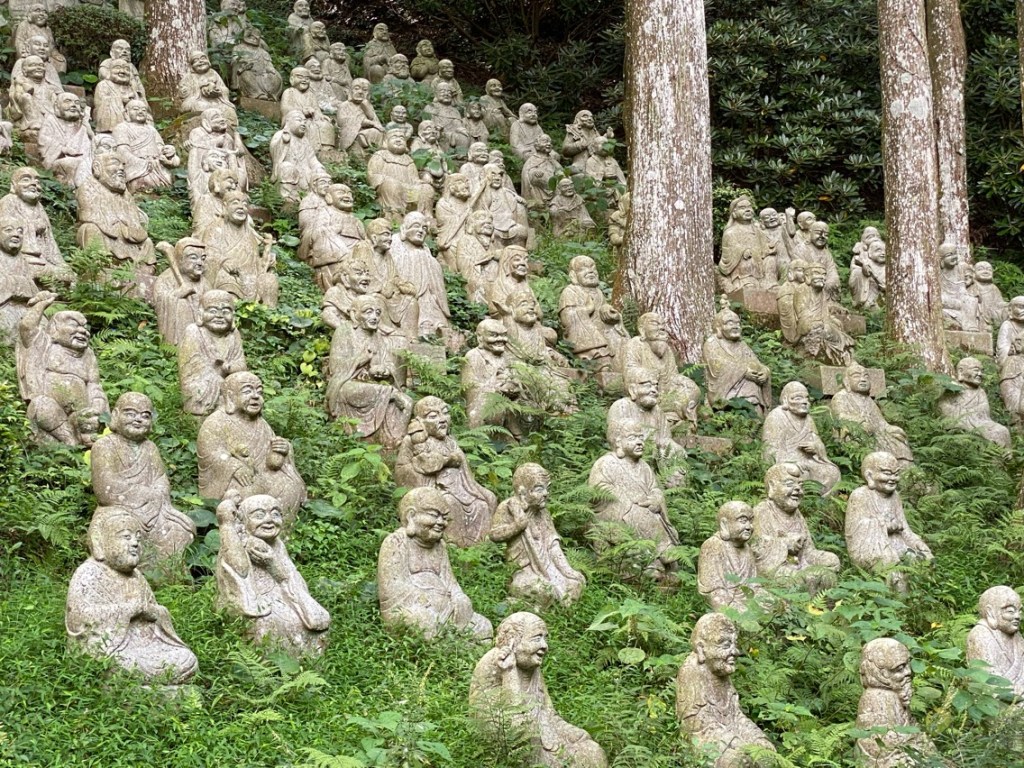









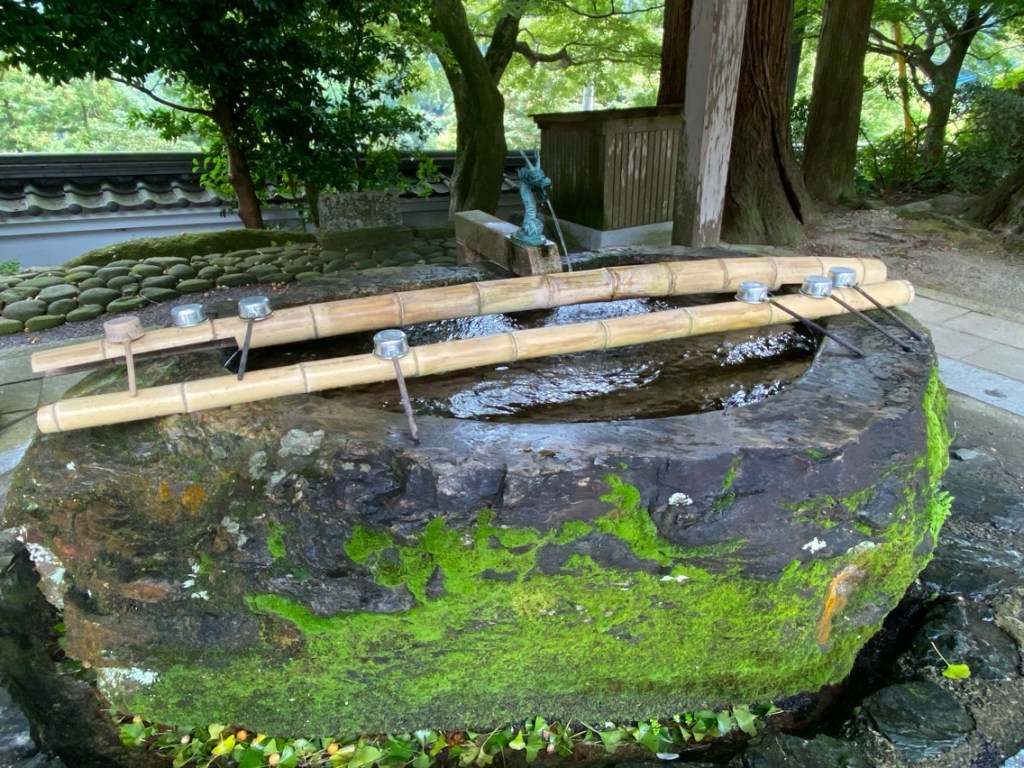





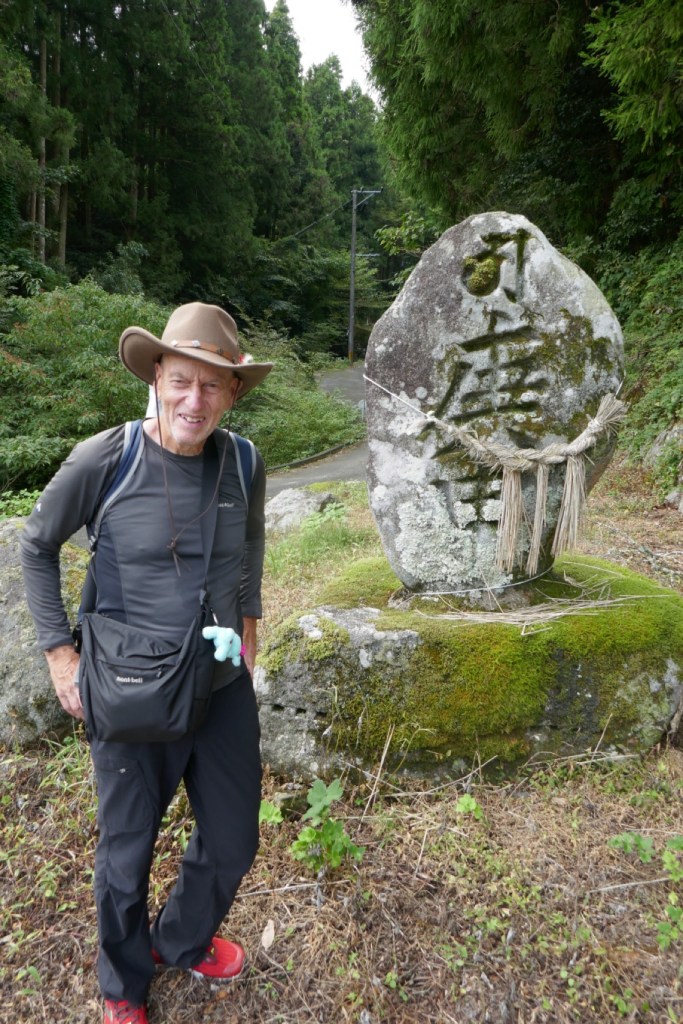
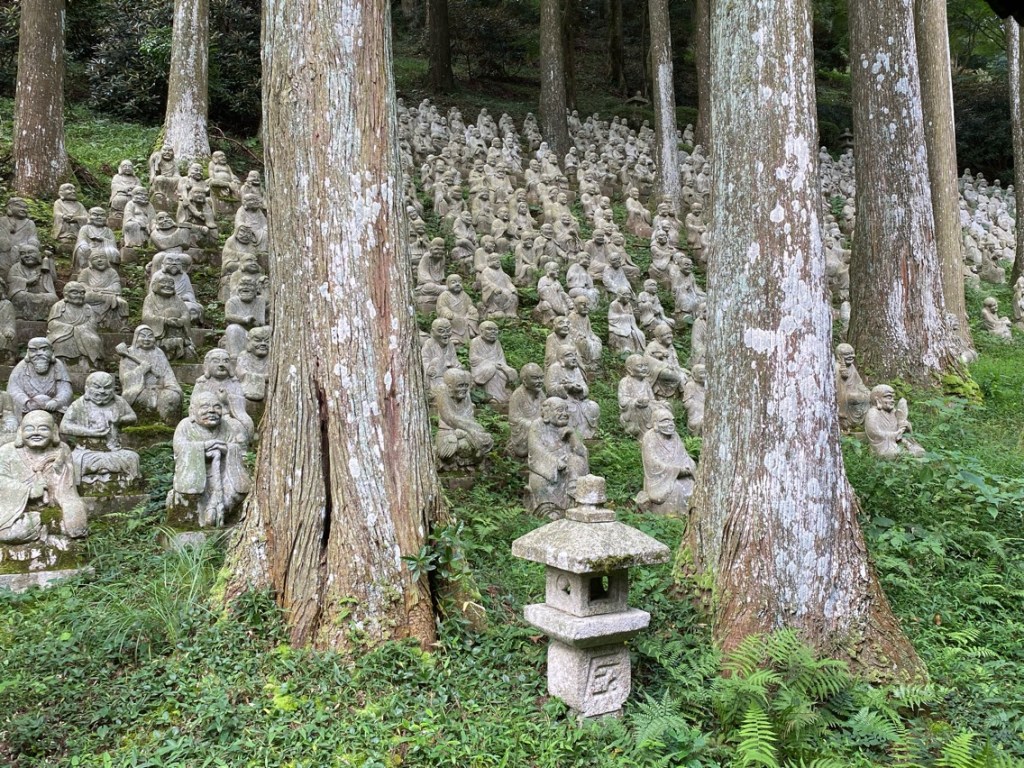


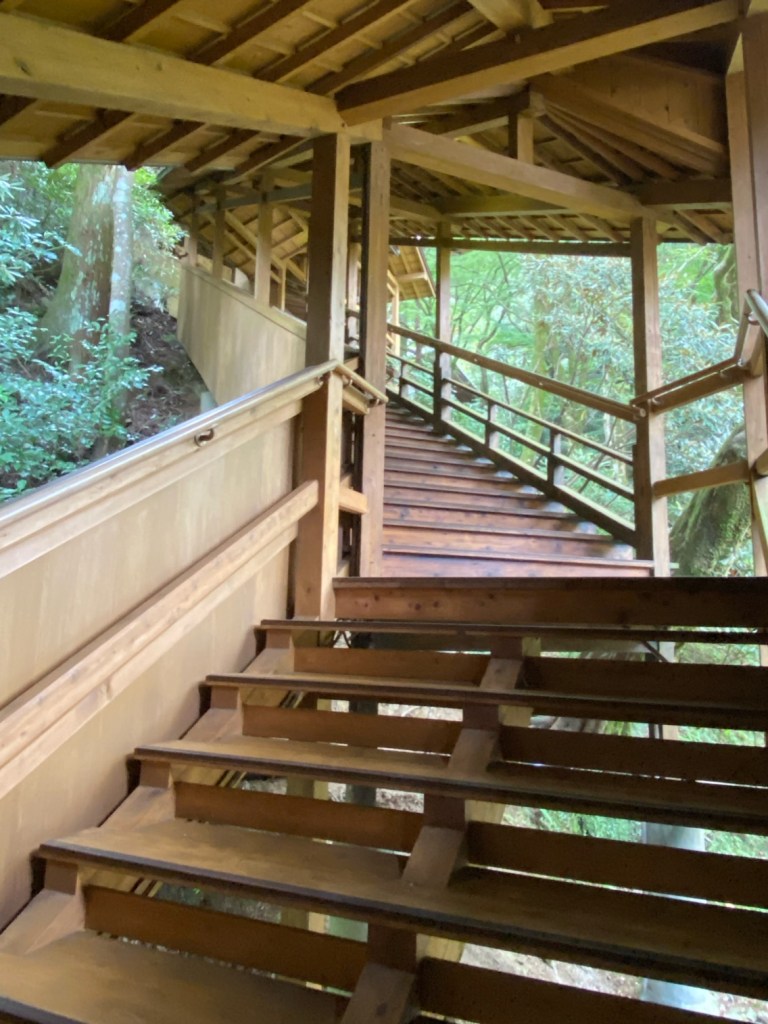


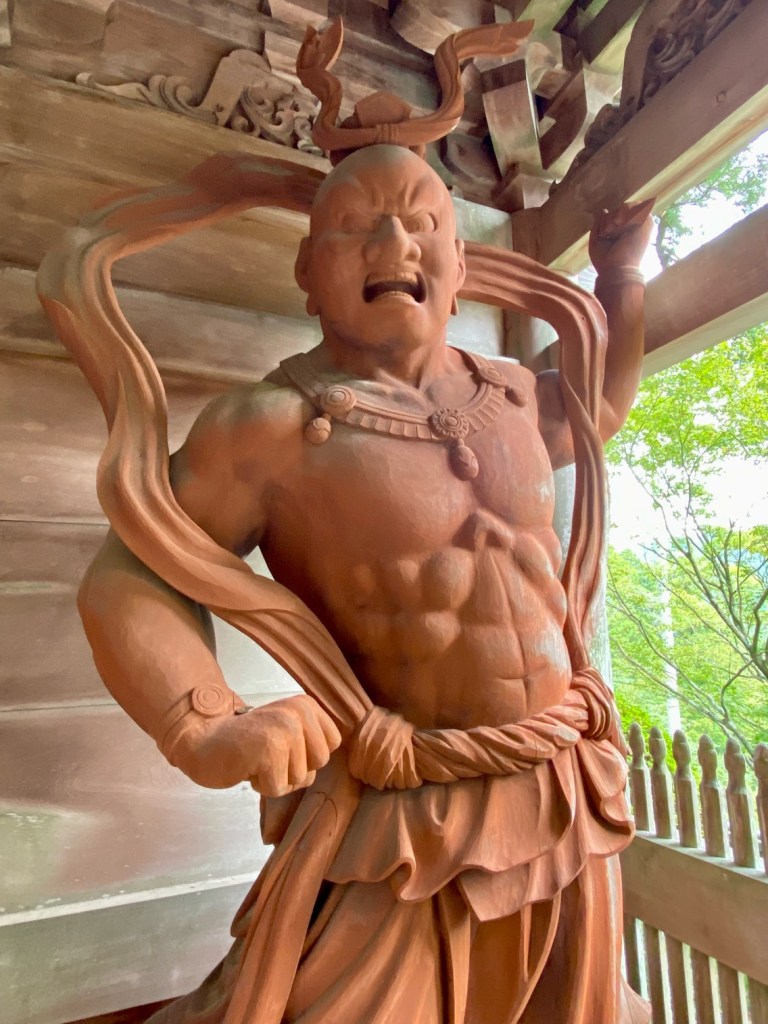



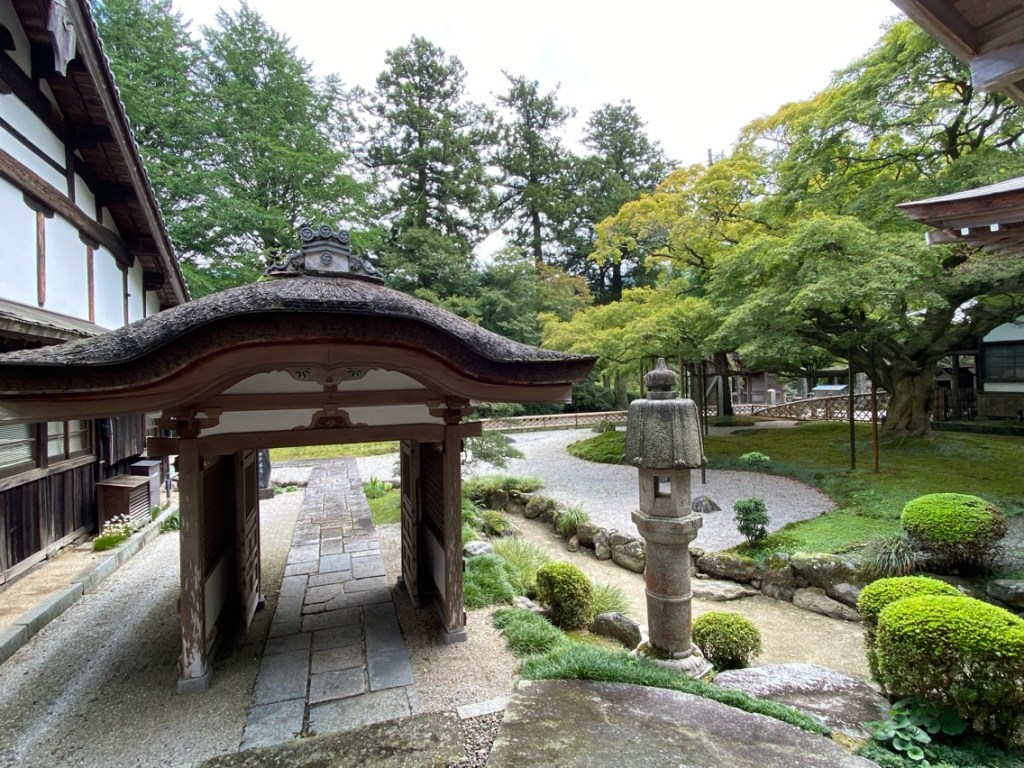






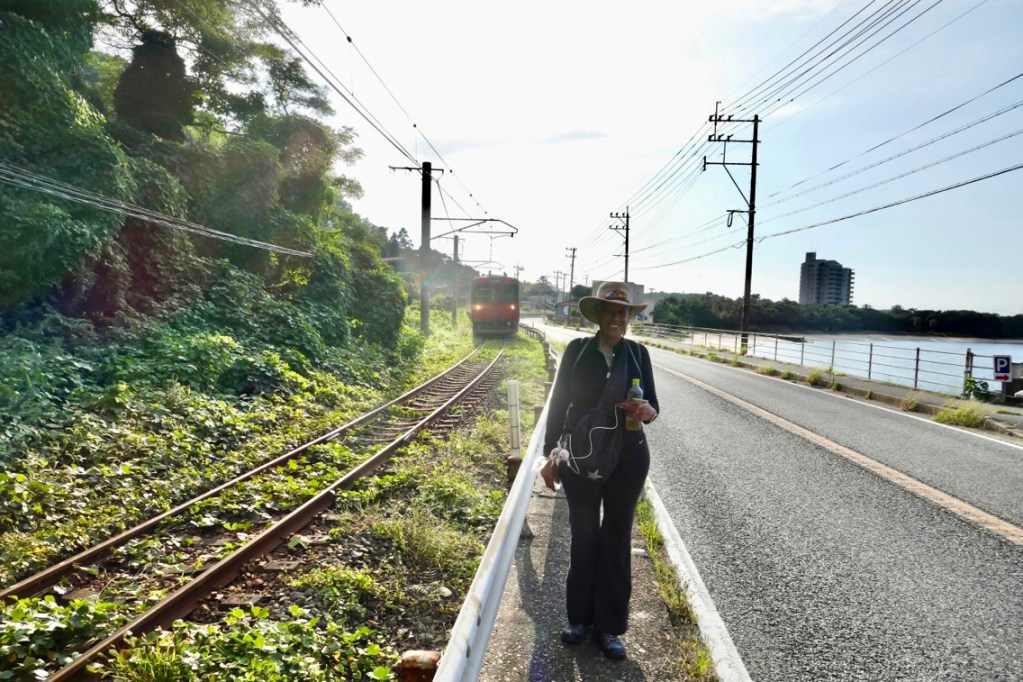

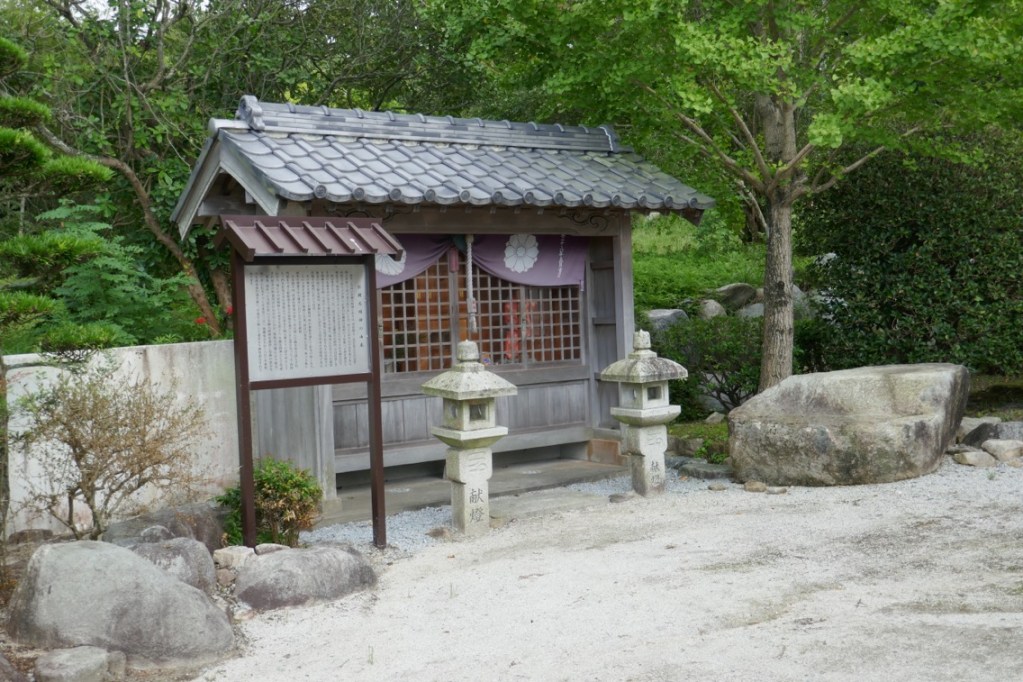

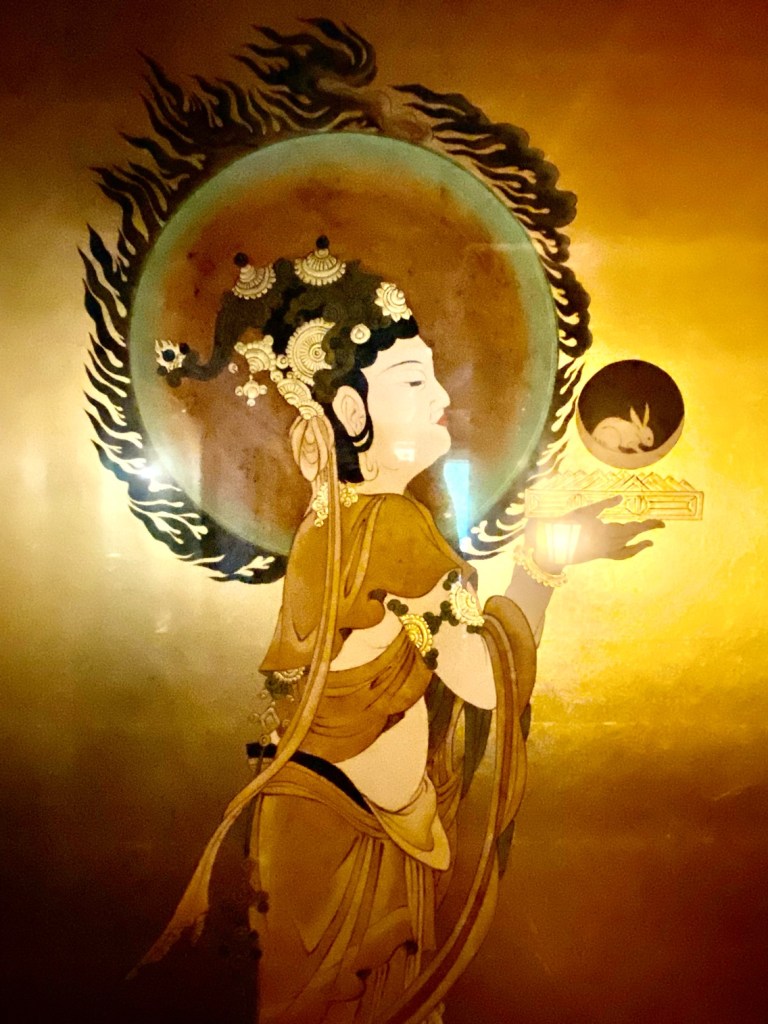
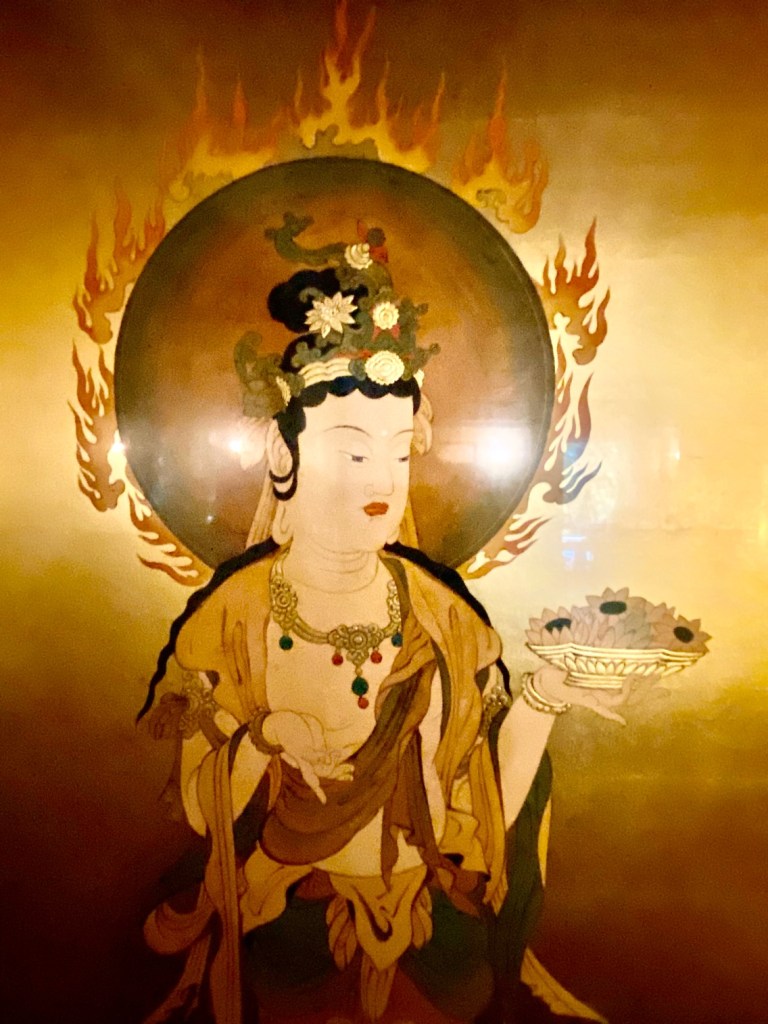

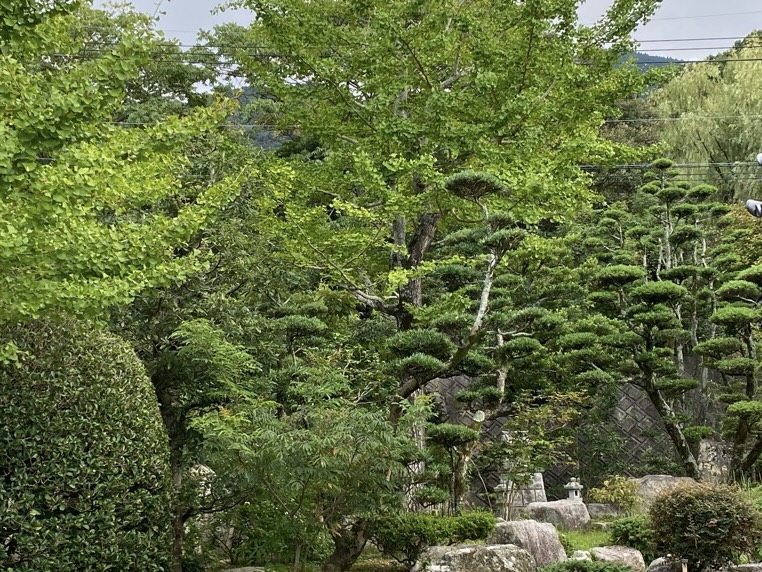




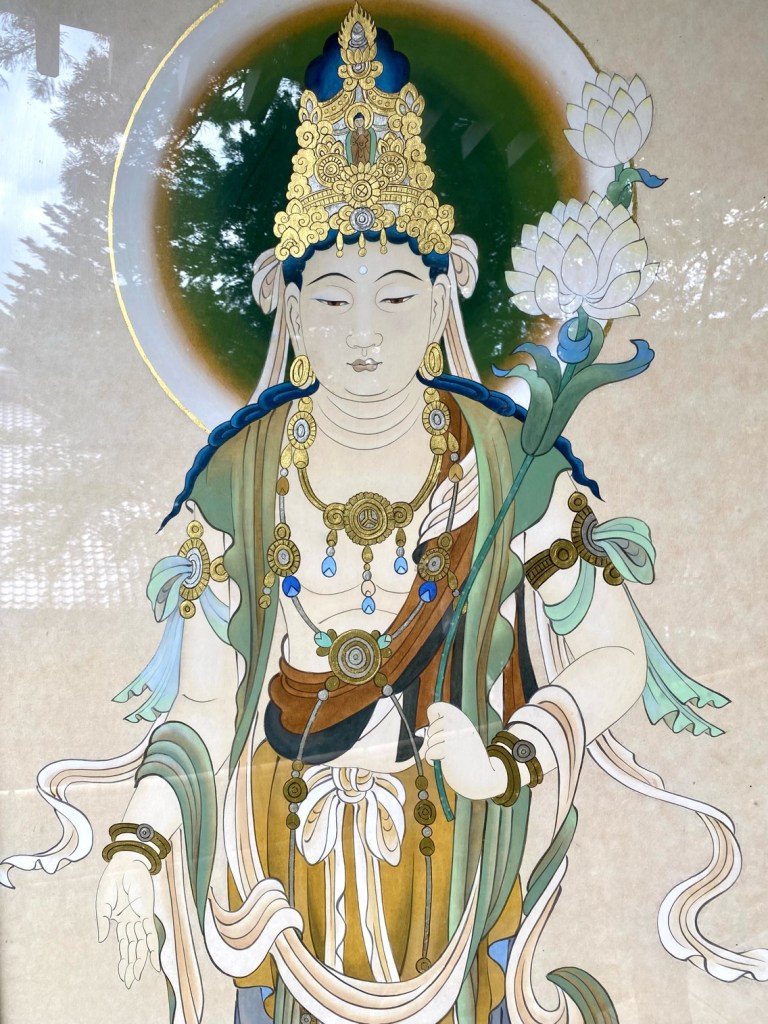


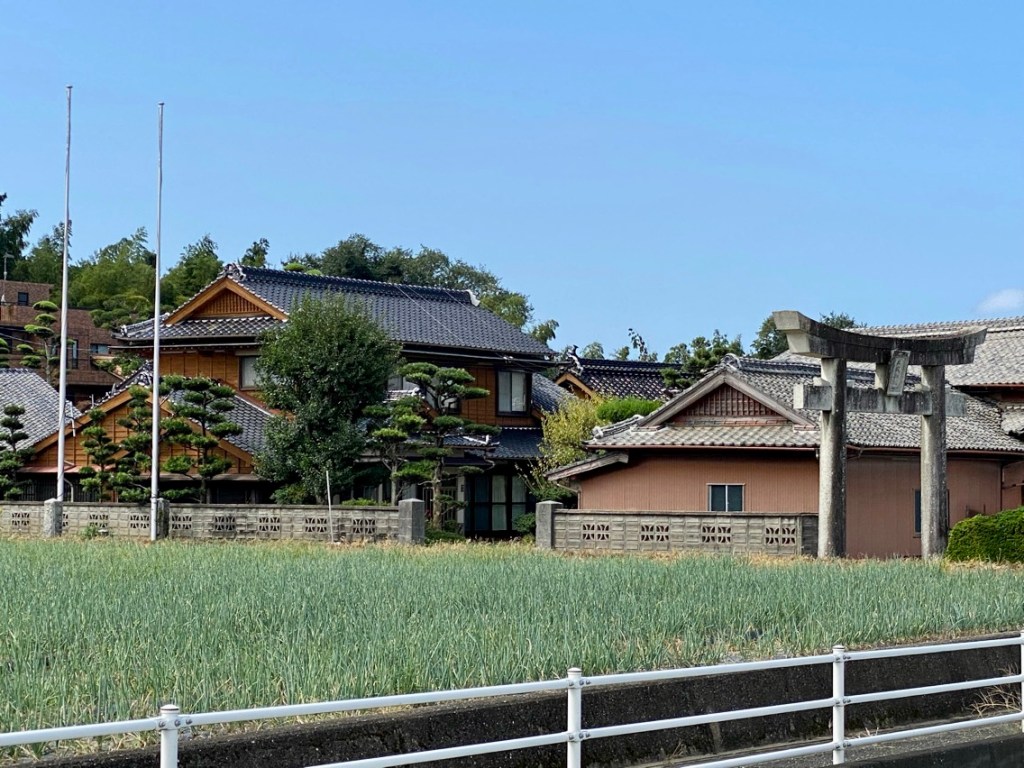


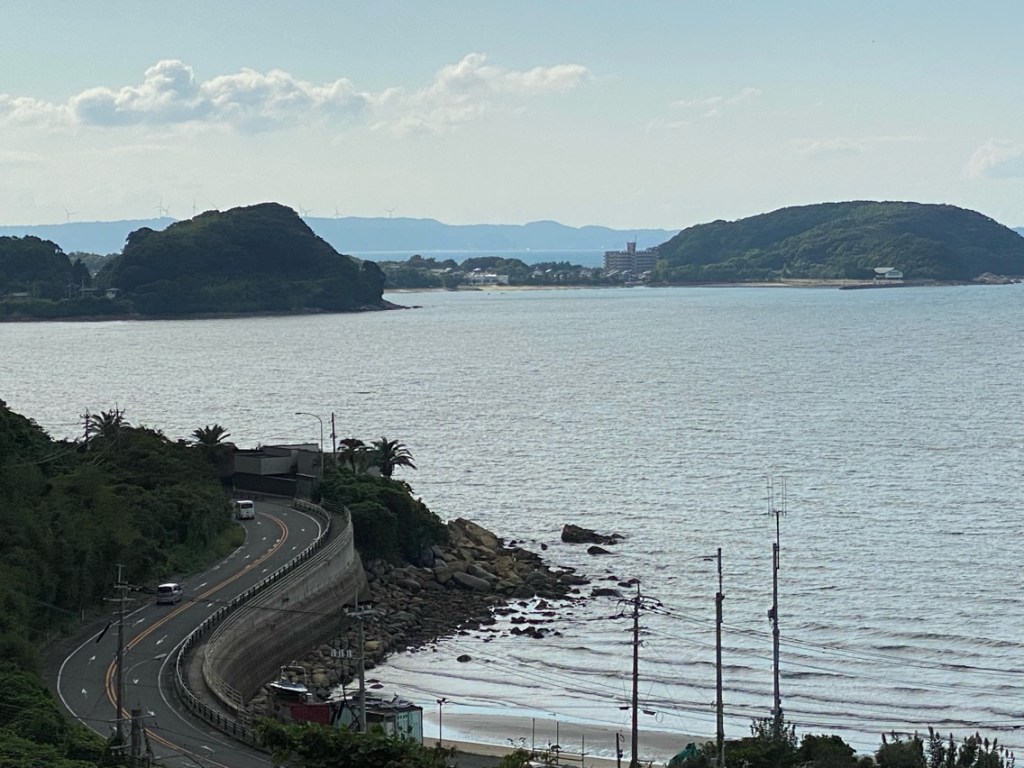






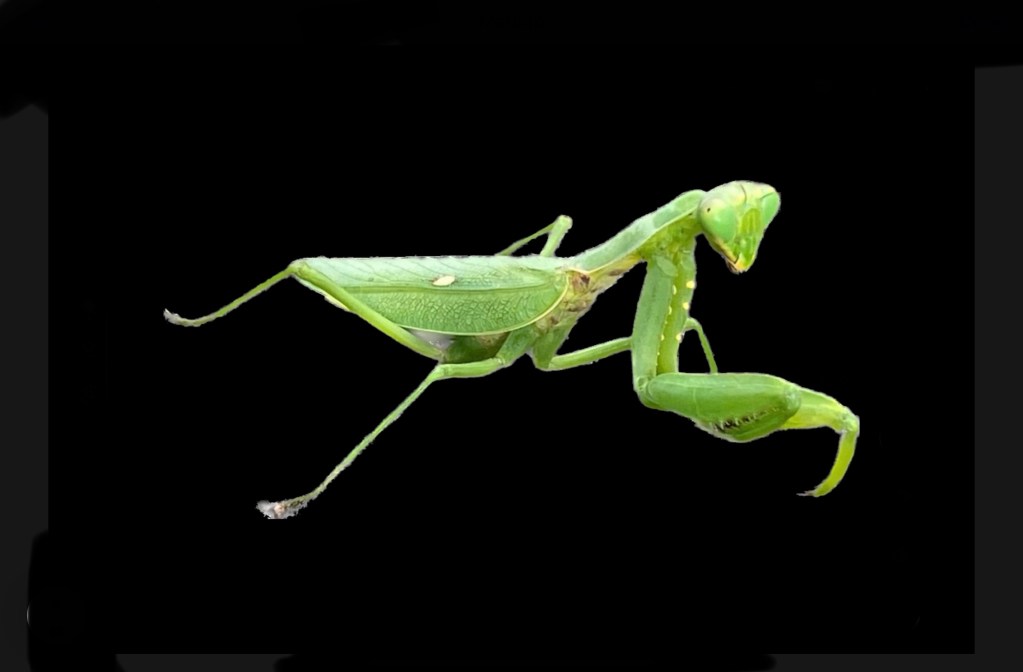

Day 3 - Raizan Mountain, Itoshima, Kyushu 108 Temple Pilgrimage, Japan
I found it hard to get out of bed at seven this morning.
I pushed all thoughts of discomfort from my mind and simply put my feet on the ground and dressed in my clean clothes.
Great! The first steps towards a day of walking were done.
Breakfast was good and simple: Miso soup, steamed rice, green tea, pickled vegetables, a slice of egg terrine and a few slices of orange.
It is Persimmon season in Japan and on our walks, we pass by many trees loaded with juicy sweet persimmons.
I have bought some to eat as a snack later in the day.
As we gathered our day packs and got ready for another day of walking, we had a minor scary moment when Jules could not locate his key bracelet.
In this hot springs hotel, the locker key is used not just for your individual locker at the hot springs, but it also has a chip that allows you to charge anything you buy to your room.
Sheepishly we went to the front desk and admitted that we had lost the key, but they immediately brought it from behind the counter, saying they had found it in the locker room.
We walked to the station and retraced our steps to the last train station and walked to Raizan Sennyo-ji Temple #80.
It is a mountain temple, located in the middle of Mt. Raizan mountain (955 metres above sea level) in the Sefuri mountain range, which spans both Fukuoka and Saga prefectures.
The temple is about half way up Mount Raizan.
The air got cooler and less humid as we climbed up.
This temple was the nicest temple we visited until now.
It was really beautiful with a manicured Japanese garden, stone lanterns, and a magnificent 400 year old maple tree.
We paid a small entrance fee and took off our shoes.
To get to the main hall, we climbed up a beautiful covered wooden staircase that led all the way to the main hall.
We gave our scroll and book to the beautifully clothed monks to get stamps.
Meanwhile, we were invited into the inner shrine room, where a monk chanted the heart sutra while playing a taiko drum.
He opened its protective case and showed us the magnificent statue of a wooden eleven-faced, thousand-Handed and thousand-Eyed Kannon, the Goddess of mercy Bodhisattva.
It was a very tall statue, about six meters tall, darkened by age and very impressive with its multiple arms and heads.
We admired the beautiful setting of this mountain temple with 500 Arhats statues on the slopes and the beautiful design of its buildings, and the lovely gardens with moss and old trees.
The temple was founded by an Indian monk called Seiga Shojin in the 48th year of Emperor Seimu (131-190AD.)
This was before Buddhism was established in Japan.
The location of the temple has a strategic advantage because it faces the Genkai Sea in the north, where at the time, you could view invaders who came from Yuan (The Mongol-led imperial dynasty of China.)
At its peak, it was home to about 300 praying monks.
In later years, during the long war of the Warring States, a civil and social war period in Japan that lasted for a whole century from 1467 to 1567, most of the monks in this mountain were killed, but Sennyo-ji Temple remained standing.
In the year 1753, more buildings were added by Tsugutaka Kuroda, the lord of the Fukuoka Domain.
More bad times fell on the temple due to the government ordinance declaring the separation of Shinto and Buddhism during the Meiji restoration (year 1868.)
Sennyo-ji Temple, which was part of a mountain complex of Jingu-ji Temple of Kami-jinja Shrine, was abandoned, and all the Buddha statues and ancient documents, including the principal image, were transferred to Daihio-in Temple in Kyoto .
We walked down into the flatland and the weather got hot and humid right away.
We went into a supermarket because we were finding it hard to find places where we could eat lunch at a restaurant that was either open or that served food we can eat.
We picked up a few onigiri rice balls and some fruit and some traditional, Japanese, sweets and took them with us.
The next temple we visited was temple #106 - Shinko-in.
It is a beautiful temple facing the sea with a backdrop of the mountains.
A charming old nun who is the priest of this temple, was gardening.
She was walking slow and hunched over, and a thought came to my mind that there is no way that she is responsible for the beautifully manicured garden of the temple.
She must have gardeners who come to do most of the work, while she does the gardening for the benefit of her own soul.
While she washed her hands and walked slowly into the main hall to stamp our scroll and book, we used the time to light incense and a candle and to chant the Heart Sutra.
She seemed surprised to hear foreigners chanting the Heart Sutra and thanked us for chanting in her temple.
She explained to us about the main temple’s Buddha who walks with you on your journey through life and helps those who are lost.
The temple is located outside Itoshima City at one of the trailheads of Mount Nijo.
It is a sacred place in which Shinto and Buddhism were practiced side by side, since ancient times.
Shinko-in Temple was founded originally in Sasaguri, Fukuoka Prefecture, in the Taisho era (1912 to 1926).
It was later moved to Fukuoka City, and in 1989, it was moved again to this location, following a vision guidance by Buddha and the fact that in the past, Buddhist monks lived and practiced on this mountain.
The principal image of worship is called Daisui Gubosatsu no Mikoto.
It is said to be a Buddha that saves anyone regardless of any felony crime they commit or bad behavior, and to grant any wish.
It is a Buddha of great mercy.
In addition, the temple enshrines a statue of Kiyotaki Daigongen, the deity that governs this mountain.
From the temple, you can look out onto the sea.
A few small islands can be seen in the distance.
The old nun told us that the sunsets are magnificent.
The setting sun dyes the islands red and they appear to sink into the sea.
The nun said that it is truly a rare place and a world of paradise, with the sea in the front and the clear mineral water flowing down behind the temple from Mt. Nijodake.
As she spoke, she slowly and carefully rolled our scroll with her arthritic fingers.
She gave us a bag of snacks and bottles of ice tea and thanked us again for our chanting.
What a charming woman!
We walked along the coast on a busy road with almost no sidewalks towards Karatsu.
I was thinking about the nun and about her words.
If she truly lived in Paradise, would she have disfigured arthritic fingers…
Would she be hunched over by age…..
Does a person living a life devoted to a path preaching kindness and mercy, living and meditating in a quiet temple by the sea and the mountain, lead to this…
Must it end in decay like this…
How can you chant daily the Buddha’s Heart Sutra saying that everything is an illusion, that there is no body, no mind, no path, and still get sicker and decay with the illusion of the passing of time…
Will Jules and I age like this…
Well, Jules is already 74 years old and he is in perfect shape and in absolutely perfect health….
But will he be so healthy and strong when he is 100 years old?….. will I?…..
We took the train back to Tenjin station in Fukuoka and went to the electronics store to replace the power bank that I had bought the day before.
It was plugged in all night but did not charge fully.
After that we had a dinner at a South Indian restaurant that we used to like when we lived in Fukuoka.
We arrived back in the hot springs hotel very late in the evening.
These really long days are also a big adjustment for me.
We went to the onsen to shower and bathe and as always, it refreshed and relaxed me so much just to soak in the hot springs.
Sending all the aged and sickly people around the world, love and thoughts of eternal healing…
Tali
Stats: 31,167 steps
Today’s walk: 21.5 km
Kilometers walked to date: 69
Temples visited:
Raizan Sennyoji Taihioin temple #80
Shinko-in temple #106